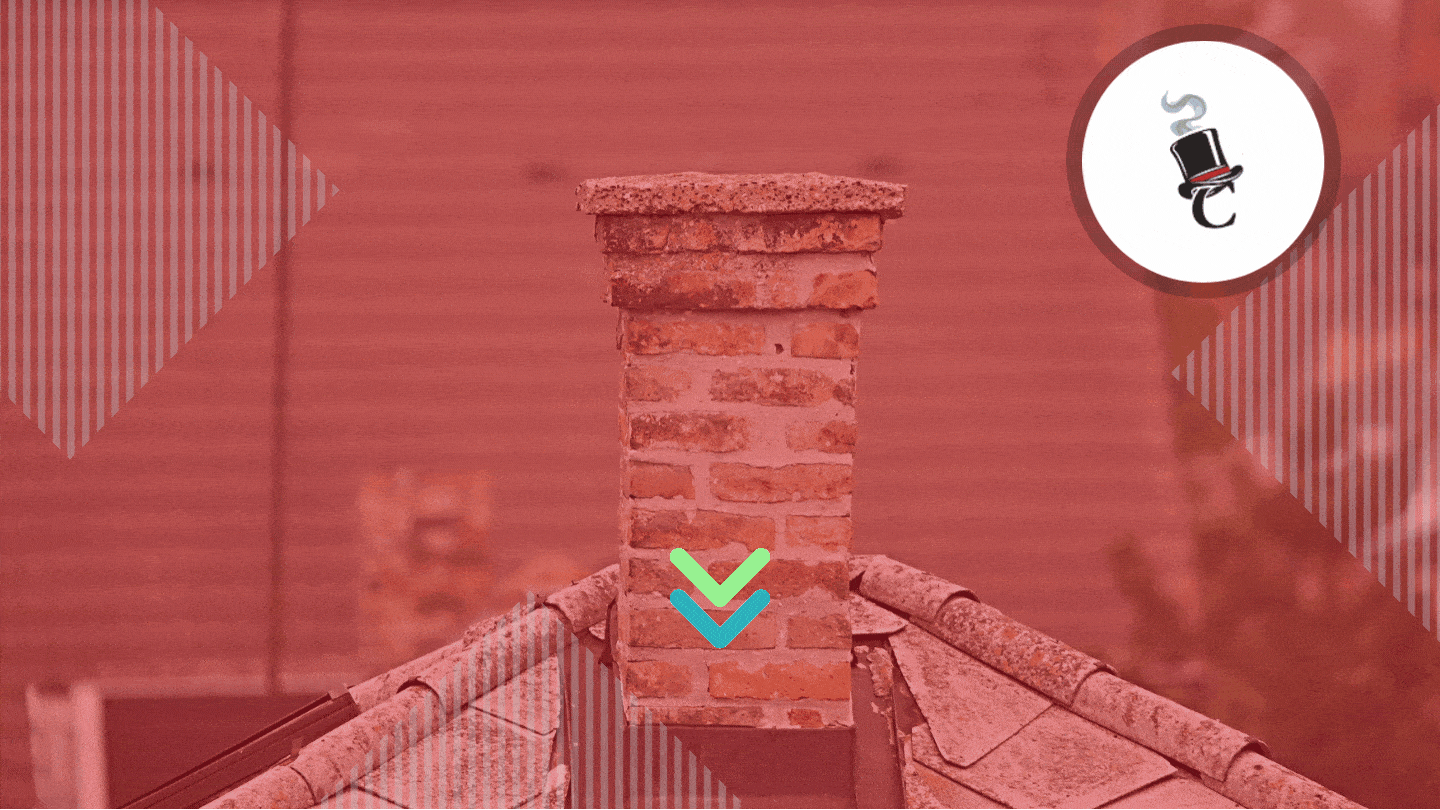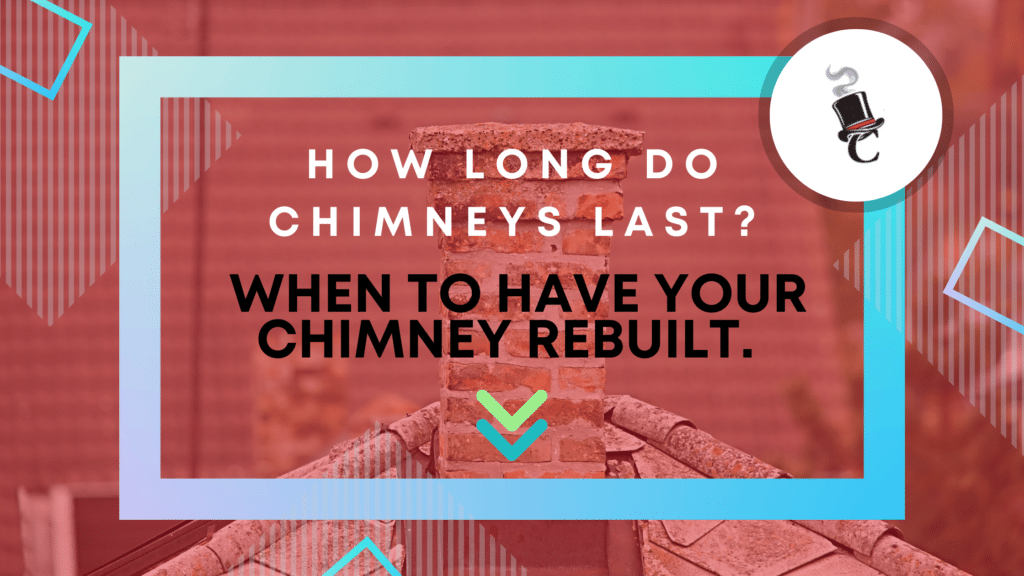
When the weather outside gets frightful, the smell of hickory smoke in your chimney is so delightful! But the delight you feel at this winter rite-of-passage becomes short-lived if your chimney is in a state of disrepair.
Unfortunately, few homeowners know when their chimney’s better days have come and gone. This short guide offers you some things to look for when it’s time to have your chimney rebuilt.
How Long Do Chimneys Last?
When you own a home, you hope that you won’t do a chimney rebuild for a long time. If you give your chimney the proper care, you can expect that: to wait a long time for a chimney rebuild.
Granted, a number of factors influence how long a chimney lasts, but saying for the sake of argument that you’ve done everything right, your chimney may last 50, 70, or 100 years. In an ideal situation, the life of your chimney equals the life of your home.
What Determines How Well my Chimney Ages?
Truly, chimney age and chimney rebuilds don’t always go hand-in-hand. An older, but well-cared-for chimney could potentially outlast a newer, but neglected chimney. That’s why yearly chimney inspections become critical to your chimney’s health.
Factors That Determine if You’ll Need a Chimney Rebuild Soon
Below, you’ll learn of some common causes of chimney aging and damage that lead to needing a chimney rebuild (at minimum).
Chimney Age and Regular Upkeep
Sometimes, your best defense against needing a premature chimney build is a good offense. Giving your chimney regular care by hiring a chimney cleaner and undergoing regular chimney inspections often mean the difference between a chimney that lasts decades and one that doesn’t. If you’d like to avoid what feels like an unnecessary chimney rebuild, don’t skip this important home maintenance task.
Structural Damage to Your Home
If your chimney resembles the Leaning Tower of Pisa, it’s time for not only a chimney inspection, but a foundation inspection as well. Shifting foundations from tree roots, oversaturated ground, earthquakes, and more affect the slant of your chimney.
Suffice it to say that your chimney’s angle should be 90 degrees. Anything other than this indicates a possible foundation issue. This problem is dangerous for both your home and your chimney. Your yearly chimney inspectionscould catch this problem early on.
You may find that structural damage affects your chimney in particular. This comes from the fact that some chimneys actually have a “foundation” of their own.
This separation of foundations (so to speak) puts a great deal of weight on the foundation. As the ground below this heavy weight starts to settle over the course of time, your chimney becomes more and more vulnerable to damage.
Where Your Chimney Is
This is related to the issue above. A chimney that stands at the side of your home takes a beating during inclement weather. The chimney that stands in the middle of your roof doesn’t get pelted as much by the elements. Fewer hail, wind, and weather nasties equals a sturdier, longer-lasting chimney.
Trees, Wires, and Other Things
Any object that knocks against your chimney, like a large tree branch or power wire, has the potential to damage your chimney. While the wire scenario seems less likely (because power companies watch out for this sort of thing), the tree branch scenario happens all the time. Protect your chimney by making sure that your tree’s branches get a regular trim.
Natural Disasters
We touched on this a bit already, but it’s worth repeating. Your chimney takes a beating in a natural disaster. Earthquakes shake the bricks loose. Tornadoes and other extreme weather conditions, like lightning and hail, do more than that: They have the power to completely dismantle it. If you live in an area that faces many natural disasters, you may have to schedule a chimney inspection more often, just to be on the safe side.
Interior Chimney Wear, Tear, and Protection
Some materials don’t work well in your chimney. Always burn dry wood instead of damper, green wood. Additionally, if your chimney doesn’t have a liner, your chimney’s interior brickwork could take a beating.
A liner protects your chimney from the different byproducts of a fire, including an acidic build-up. This substance, if left unchecked, slowly erodes away the materials from your chimney. This weakens them. If the masonry gets too damaged by this process, called pyrolysis, you could face dangerous levels of heat and even sparks.
Older homes built during the World War II-era are often liner-less. Once the 1950s rolled around, requirements for chimneys, and more specifically, for liners, began to change. You should check these elements often to avoid the potential fire hazard they could cause.
Moisture Problems
Bricks can take a beating. The mortar between the bricks… Not so much. If water and moisture seep into the mortar, the mortar in your chimney breaks down. This is due to the annual cycle of freezing in the winter and thawing in the spring.
Eventually, the bricks begin to buckle and lean as the supports for them break apart. Unchecked moisture problems are one of the primary reasons why homes need a chimney rebuild.
Waterproofing adds life to your chimney, allowing your chimney to age more gracefully, so to speak. When you waterproof your chimney, you reduce the likelihood of it breaking down due to water damage.
Capless Chimneys
Your chimney’s cap protects it like a hat protects your head in winter. A chimney cap keeps debris out of the chimney. It has also been known to reduce the risk of a fire in a chimney.
What About Repairing the Masonry?
This offers you an in-between option if your chimney doesn’t have too much damage. Rebuilding the masonry may, indeed, give your chimney more life. A yearly chimney inspection tells you for sure if this is a viable option for your chimney damage issues.
When Do I Need a Chimney Rebuild?
While the future may have homes with smart chimneys, complete with a warning system that tells you when you need a chimney rebuild, those days haven’t come yet. In lieu of a computer app that issues you that warning, here are some signs to look for that indicate your chimney needs a rebuild.
Here are a few warning signs that you need a chimney rebuild:
- Spalling: This is when your chimney starts to drop bricks due to water saturation and damage.
- Structural damage: This could include large cracks in the chimney. A Leaning-Tower-of-Pisa chimney begs for a chimney rebuild.
- White streaks on the chimney: Called “efflorescence,” this phenomenon happens when your chimney develops white streaks. Chimney repair may be an option if you deal with this problem in a timely manner. It pays to keep an eye on your chimney’s condition throughout the year. Such vigilance helps you spot problems like this one early on.
Do I Need to Do Yearly Chimney Inspections?
A yearly chimney inspection keeps many of your chimney-related issues in check. You should schedule a chimney inspection like you schedule your teeth cleaning: regularly and before you need them.
Additionally, if you just bought a new home, put this task on the list of things to do, and do it before you put the hickory logs on the fire for the first time. Have it checked out in late summer or early fall just to be sure it’s safe to use your chimney.
Final Words on How Long Chimneys Last
A well-cared-for chimney has the potential to last the lifetime of your house and then some. However, many factors affect how healthy your chimney is or isn’t. These include structural or elemental damage, chimney age, how often you schedule upkeep, and even your chimney’s location.
While no one wants to undertake a major task like a chimney rebuild, eventually, most chimneys wind up needing one. This is particularly true if you have an old chimney that doesn’t have good waterproofing or that has been subject to the shifting of your home’s foundation.
